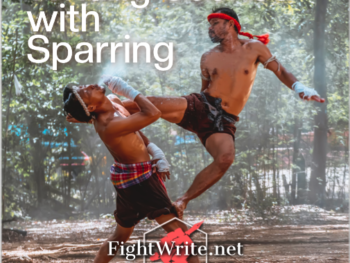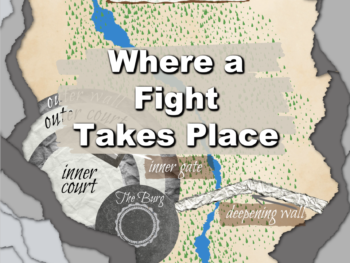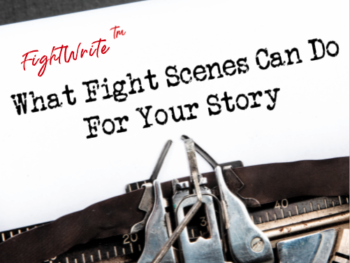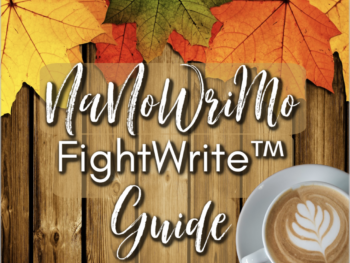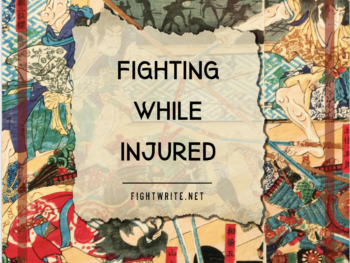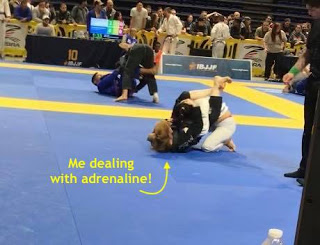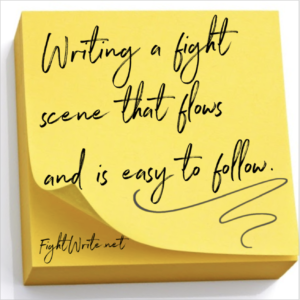 I put a call out on Instagram for fight scene questions. @head_over_heels_for_books asked, “How can I write a fight scene that flows and is easy to follow?”
I put a call out on Instagram for fight scene questions. @head_over_heels_for_books asked, “How can I write a fight scene that flows and is easy to follow?”
Super great question which I answered on IGTV. But, I will include the answer here as well.
IGTV – Making Fight Scenes Flow and Easy to Follow
I am going to tackle the last part of the question first and that is how to make a fight scene easy to follow.
I think if you ask ten writers this you will get ten different answers. But, here is my take. I have a 3 part series of posts on this btw. Peruse at your leisure.
Part 1 – Writing the Action Part 2 – Blocking Part 3 – Fight Scenes Examples
Easy to follow
When it comes to making a fight scene easy to follow, focus less on the action and more on the impact of it.
Action
 Don’t write every single movement. Focus on the movements that stand out. Thing is, for us writers, sometimes it ALL stands out! So, consider only writing the movements you would see in comic book panels. Comic books and graphic novels are brilliant at this. Give them a look. Sometimes, comic books and graphic novels illustrate tiny movements but only when they have a big impact on the fight.
Don’t write every single movement. Focus on the movements that stand out. Thing is, for us writers, sometimes it ALL stands out! So, consider only writing the movements you would see in comic book panels. Comic books and graphic novels are brilliant at this. Give them a look. Sometimes, comic books and graphic novels illustrate tiny movements but only when they have a big impact on the fight.
Impact
What these works focus on instead are what we as writers should focus on. Rather than every move of the fray, they focus on facial expressions, drops of sweat, sprays of blood and callouts with sounds like pow and smack. They don’t just depict a fight, they create a sensory experience for the reader. That’s what we traditional writers want for our readers as well. We want them to experience the scene. The sensory details of a scene are what the reader can relate to! If we create a scene where nothing is anything like what a reader is used to, they might be so busy trying to imagine what’s happening that they are taken out of the moment. We have to meet our reader on common ground. Even if the ground of our setting is an alien planet and our characters are not human, our readers have to see something of their own selves in the work.
Creating an experience
A good exercise to get you in the experience mindset is also a grounding exercise for people who have anxiety. For people who have anxiety, the exercise takes their mind off of the surrounding chaos and focuses on where they are in that moment. For writers, the practice takes our focus off what is happening in the fight and puts it on the sensory details of it. It puts us in the moment of the fight. It takes us ringside.
Go to the site of your fight and list mentally, or literally write the list, from your work’s POV, not your own. Whatever your POV is, look at it from that. These are not details you have to include in your fight scene.
5 Things
- FIVE things you see
- FOUR things you can touch
- THREE things you can hear
- TWO things you can smell
- ONE thing you can taste
Notice that none of those things have to do with emotion. For people with anxiety, emotions can betray the moment. For writers, the lack of emotion in the 5,4,3,2,1 reminds us that, in the midst of a physical confrontation when adrenaline is pumping, emotions are dulled. That lack of emotion is for our own protection. We don’t need to consider the emotional implications of a bear eating our face. We need to run!
Here’s a post I did years ago interviewing a woman who had been attacked by half a dozen people. Yes, really. She relates what went through her mind during the attack and it wasn’t fear.
And, now for the first part of the question. How to keep the flow.
The Flow
Write. A lot. Develop your writing voice. If you gave Tolkien, Mary Shelley and Mark Twain the same fight scene to write, they would all sound very different. However, the would all flow because each of those writers is comfortable in their writing voice. That is not to say that writing the scene will be easy. I don’t think writing every gets easy. It’s like fighting, the better you get, the more you raise the bar for yourself so it always feels labor intensive. The easier someone makes something look, the more work that went into it. So, don’t let the challenge of writing convince you that you aren’t good at it.
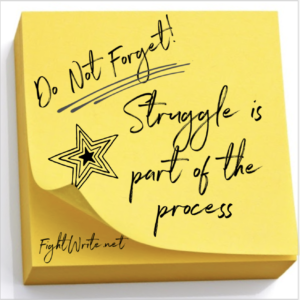 Struggle is part of the process which is soooo ironic for me to be saying because lately I’ve just wanted to quit jiujitsu because Im working my butt off and still getting my butt kicked. I said something to my coach about it and he said that is just part of it. It’s normal. SAME WITH WRITING. Struggle is part of the process.
Struggle is part of the process which is soooo ironic for me to be saying because lately I’ve just wanted to quit jiujitsu because Im working my butt off and still getting my butt kicked. I said something to my coach about it and he said that is just part of it. It’s normal. SAME WITH WRITING. Struggle is part of the process.
In summary
To keep your fight scene flowing, keep blocking simple and put the focus on experience of it the fight rather than the mechanics of it.
Ok, fightwriters, that’s it for this post. Keep an eye out of my IG stories (@carla.c.hoch or #fightwrite) for open calls for fight writing questions.
Until the next round at FightWrite™, get blood on your pages!



